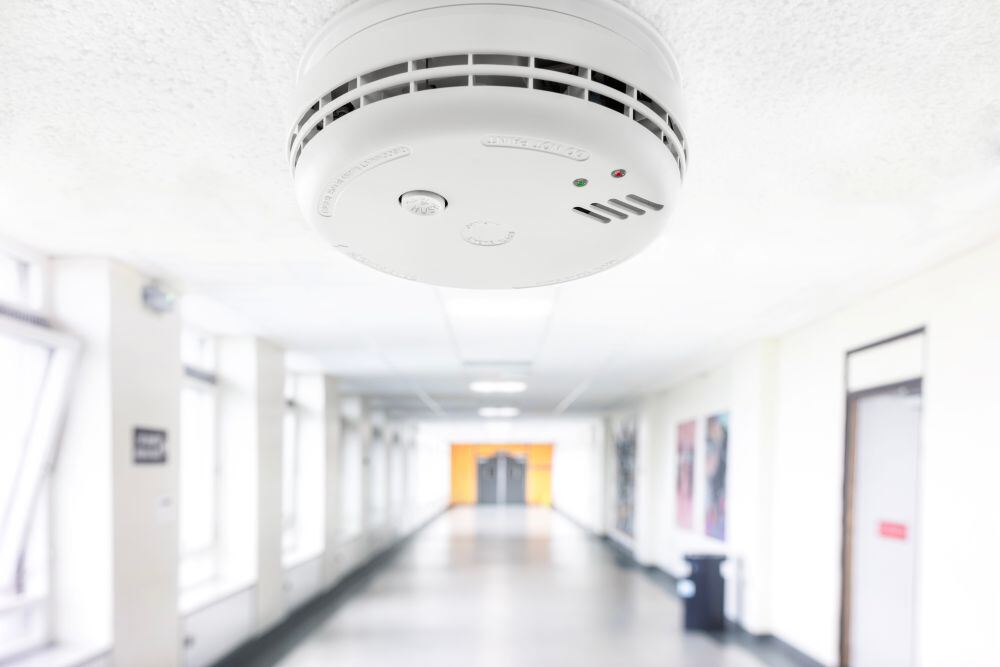
Lockdown Alarms - all you need to know...
Lockdown alarms have become an essential component of modern security systems, particularly in environments where safety and swift response are vital. Their integration with existing security solutions can significantly improve the ability to prevent, respond to, and manage emergencies efficiently. This article explores the benefits of lockdown alarms and how their seamless integration can provide comprehensive security coverage.
Invacuation
refers to a safety protocol where individuals inside a building are moved to secure interior locations instead of evacuating the premises. This strategy is typically employed when external threats, such as severe weather or nearby security incidents, make outdoor evacuation more dangerous. Lockdown security alarm systems facilitate invacuation by signaling the need to move indoors, often accompanied by specific instructions to proceed to designated safe areas and secure doors and windows. The system may also include features for internal communication, allowing authorities to provide updates and guidance during the invacuation period, ensuring the safety and security of all occupants within the building.
Benefits of Lockdown Alarms
1. Prompt Emergency Response
One of the key advantages of lockdown alarms is their ability to facilitate rapid response during crises. When activated, these alarms notify security personnel and occupants immediately, enabling swift action. Quick alerts can also help minimise the time taken to secure premises, thereby reducing the risk of injuries or fatalities.
2. Improved Safety and Security
Lockdown alarms enhance safety by limiting the movement of potential intruders or threats. Once triggered, automatic locking mechanisms on doors and windows prevent unauthorised access or escape, effectively isolating the threat to a single area. This containment helps protect occupants while law enforcement and emergency responders arrive to handle the incident.
3. Crime Deterrence
The presence of effective lockdown systems acts as a deterrent to potential offenders or intruders. Knowing that facilities are equipped with advanced lockdown alarms reduces the likelihood of attempted breaches, as offenders are aware that rapid lockdown measures are in place, increasing the risk of failure or apprehension.
4. Minimise Damage and Disruption
Lockdown alarms can prevent property damage and minimise operational downtime. By swiftly containing threats, these alarms help avoid extensive damage and operational disruption. This is particularly important for commercial, educational, and government buildings where maintaining normal operations is critical.
5. Better Communication and Coordination
Integrated lockdown alarms can be linked with communication systems such as public address (PA) systems, mobile alerts, and digital signage. This interconnected approach ensures that information is conveyed instantly across the premises, allowing occupants to follow safety instructions and security teams to coordinate their response effectively.
Integrated lockdown alarms can be linked with communication systems such as public address (PA) systems, mobile alerts, and digital signage. This interconnected approach ensures that information is conveyed instantly across the premises, allowing occupants to follow safety instructions and security teams to coordinate their response effectively.
6. Compliance with Safety Regulations
Many sectors and institutions are subject to strict safety and security regulations. Integrating lockdown alarms helps organisations meet these compliance requirements, avoiding penalties and demonstrating their commitment to providing a safe environment.
While lockdown alarms offer substantial benefits, their real value is realised when integrated with existing security infrastructure. A comprehensive security system provides better prevention and response capabilities, ensuring holistic protection.
1. Compatibility with Access Control Systems
Integrating lockdown alarms with access control systems ensures that doors can automatically lock or unlock based on the situation. For example, during an active threat, doors can be automatically locked to contain the danger, with authorised personnel able to override the system if necessary. This integration enables dynamic control and real-time security management.
2. Connection with CCTV and Surveillance
Linking lockdown alarms with CCTV and surveillance cameras enhances situational awareness. Real-time video feeds can be monitored by security teams or emergency services during incidents, allowing precise assessment and targeted responses. Automated camera focus on the affected zones can streamline investigations.
3. Synchronisation with Intrusion Detection Devices
Lockdown alarms can be linked with intrusion detection devices such as motion sensors, door/window contacts, and glass-break detectors. This layered approach ensures that multiple threat indicators can trigger lockdowns automatically, increasing overall security.
4. Effective Communication and Alerts
Combining lockdown alarms with instant communication channels—such as mass notification systems, mobile alerts, and public address (PA) systems—ensures that everyone inside the venue is quickly informed. These alerts can provide instructions, updates, and reassurance, reducing panic and confusion.
5. Centralised Security Management Platforms
Modern security solutions often use central management platforms to oversee multiple devices, including lockdown alarms. These platforms enable security teams to monitor, control, and respond to incidents from a single interface, improving coordination and decision-making.
Challenges and Considerations
While integrating lockdown alarms with existing security systems offers many benefits, it also presents challenges. Compatibility issues between different devices, the need for strong cybersecurity measures, and staff training are vital factors. Regular testing, updates, and maintenance are essential to ensure the system works correctly during emergencies.
Conclusion
Lockdown alarms are a vital element of contemporary security strategies, providing rapid response capabilities, improved safety, and deterrence of threats. When integrated seamlessly with existing systems—such as access control, CCTV, intrusion detection, and communication solutions—they create a comprehensive security environment capable of effectively managing emergencies. Investing in such integrated systems not only enhances safety but also ensures organisations are better prepared to face unforeseen incidents, protecting lives, property, and business continuity.
Category:
Fire Alarms

